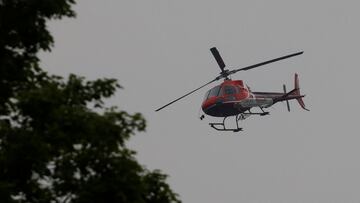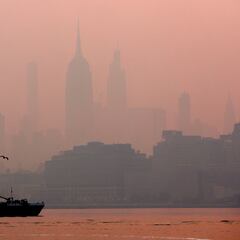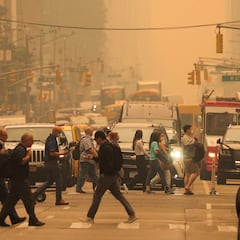How did the wildfires in Canada start? The reason why they will have a severe wildfire season
Hundreds of wildfires across Canada are sending smoke all throughout the northeast of the US. How and when did these fires start?


The recent wildfires in Canada have resulted in smoke spreading to the northeast of the United States, causing cities like New York City to be engulfed in some of the worst air quality conditions worldwide. Although wildfire season usually begins later in the year, the dry climate and strong winds this year have led to an ecological and public health crisis that has affected two countries. You can track the smoke from the wildfires in real time.
The dangers posed by the smoke are a stark reminder of the warming world that awaits us and are a prime example of the failure of governments and leaders to put the health of their citizens and the ecosystems we depend on above corporate profits. Climate change is the consequence of our global dependence on fossil fuels —a dependence that is literally killing us. A 2018 Harvard University found that one in five deaths globally can be attributed to the impacts of toxic air on the body. In addition to the burning of fossil fuels, forest fires send millions of tons of carbon dioxide into the atmosphere, furthering the greenhouse effect and perpetuating the threat that greater fires will be seen in the future.
How did the fires start?
Images from Global Forest Watch, which uses satellite data to track fires in near real-time, map all those that are still burning across Canada.
Response and conditions on the ground
In Canada, ninety percent of the population lives within one hundred miles of the border with the United States. Many of the areas where the fires are burning are very sparsely populated, which presents challenges for firefighters to be able to respond quickly. For example, one of the cities visible on the map, Lebel-sur-Quévillon, is home to just over two thousand residents. Without a quick response, fires can quickly pick up speed and power, particularly if the conditions are particularly conducive to fire.
And, in many parts of the country, it is those conditions that have led to this current phase of fire disaster. Large swaths, particularly in western provinces, are under drought advisories. At the end of April, the Canadian government reported that “thirty-four percent of the country was classified as Abnormally Dry (D0) or in Moderate to Severe Drought (D1 to D2).”
Additionally, two very hot summers, including that endured in 2021 which was the hottest the country ever recorded, have left the forest drier than usual. This leaves the brush very vulnerable to fire in cases when trees are struck by lighting, which is how eighty-five percent of forest fires in the country are started.
France prepares to send reinforcements
When so many fires begin to burn at once, finite resources need to be deployed to the areas where firefighters believe they have the best chances to slow the pace of the blaze.
With 137 active fires, Quebec is one of the most impacted provinces. As of this year, there have been 443 fires recorded by officials, almost twice the average number of fires by this time of year over the past decade, which is 205.
Related stories
Earlier this week, President Emmanuel Macron of France announced that he would be dispatching a team of one hundred firefighters and experts to aid the Canadian government.
Le Canada fait face à de terribles incendies.
— Emmanuel Macron (@EmmanuelMacron) June 4, 2023
La France est solidaire. Une centaine de nos soldats du feu se préparent à aller combattre les flammes aux côtés de leurs camarades québécois. Des experts sont aussi mobilisés.
Amis canadiens, les renforts arrivent.
As Quebec, the French-speaking region of Canada, is currently the most affected, the common language will facilitate seamless cooperation between the firefighters.

